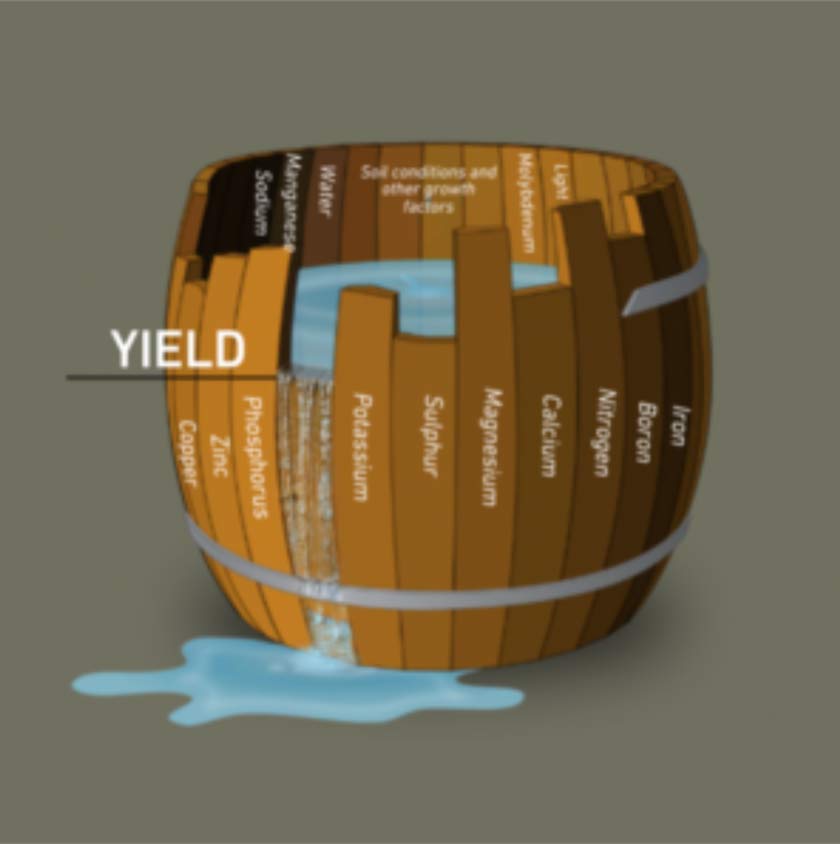The precision agriculture industry hasn’t done a great job articulating the value of site-specific soil testing, which has led to frustration from farmers, who aren’t sure how to use what they learn from the tests. “Soil testing methods haven’t changed in 20 years,” says Kent Klingbeil, a lead agronomist at Advanced Agrilytics. “No one has explained what you’re learning from it or how you use it.”
Grid soil sampling, most commonly done in 2.5 grids, was introduced in the mid-1990s, before we had yield monitors. The goal was to raise overall fertility to achieve more consistent results based on the correlation between nutrient concentration and yield. While this practice had value (increasing granularity of assessment of nutrient/pH values), it never achieved the promise of leveling out soil sample concentrations.
The problem? A large portion of fertilizer applications used a field-level average yield goal and not machine-captured yield data to assess what grain was harvested spatially and how many nutrients had been removed. Soil test results were inconsistent and yield improvement was hard to document, leading many growers to question the effort and cost.
Reasons for Soil Sampling
“At Advanced Agrilytics, prospective customers often tell us that they don’t see the value in soil sampling,” says Klingbeil. “We hear, ‘I used to do it but haven’t recently,’ or ‘There is no relationship between soil test values and yield.’ While both statements are understandable, given their experiences, what are we actually trying to accomplish with soil testing?”
By definition, soil testing estimates the soil’s chemical concentration (plant-required nutrients and pH) and its physical properties (organic matter and cation exchange capacity (CEC)). Shouldn’t that be enough information for making fertility and seed placement decisions? It’s good, but we believe growers can do better.
Consider the Location of Your Soil Sample Point
“Industry standard testing today has no consideration for the environment of the soil sample points,” explains Klingbeil. “Without that environmental information, the test can’t drive the nitrogen (N) decision.” Farmers need to know the nutrient availability, which is affected by soil temperature, soil moisture/rainfall, landscape position and other factors. Given a uniform concentration of nutrients in the soil, a plant will respond differently depending on where it stands and, ultimately, on soil moisture content.
This relationship of soil moisture to nutrient availability needs to be a driving factor in the placement of soil sample collection points in areas where differences in soil moisture will exist (landscape position, differences in organic matter and cation exchange capacity). “At Advanced Agrilytics, we developed an advanced method for managing point placement to ensure greater accuracy,” says Klingbeil. “Points are specifically placed in each environment and reviewed field by field. With higher granularity, your fertility, nitrogen and seeding rates can be optimized in each environment.”
While some nutrients, such as nitrate and sulfate, migrate to the root by mass flow of soil water, many soil-immobile nutrients, like phosphorus (P) and potassium (K), move by diffusion. During the growing season, diffusion (the movement of high concentration to low concentration) is created by plant uptake, which creates a lower concentration zone.
Soil moisture content also plays a key role. Lower soil moisture hinders the movement of P and K, thus reducing availability during periods when the soil cannot supply enough of these nutrients to the plant. Think about dry conditions in your corn or soybean fields from past seasons, and you’ll see that K deficiency shows up on higher ground first.
Using Soil Sampling and Critical Level to Influence Application Rate
A prescribed rate of nutrients takes into account the soil sample but also includes a critical level or a soil test level where additional nutrient applications will not improve yield (Liebig’s Law of the Minimum, Figure 1).

While most prescriptions use a static critical level across a field, our methodology includes soil test concentrations and a spatial critical level. This approach was developed to manage against the known influences landscape position has on a plant’s ability to access immobile nutrients. We need to understand the soil moisture dynamics of every acre. Organic matter and CEC, taken together with elevation, provide better guidance on a soil’s nutrient concentration as well as on how to prolong nutrient availability as soils become dry during later crop stages.
Soil test organic matter percentage also helps guide nitrogen applications.
Mineralization of N from the soil organic fraction is important and can supply as much as 150 lbs. N or as little as 30 lbs. N during the growing season in the same field. Spatially understanding N mineralization helps derive a variable rate nutrient (VRN) prescription that provides yield improvement this season and creates yield stability year after year in wet or dry seasons. This prescription addresses the factors that influence N availability: saturated soils that will lose N due to denitrification and/or leaching and soils that have less organic matter percentage, are higher in elevation and will supply less N for the growing crop.